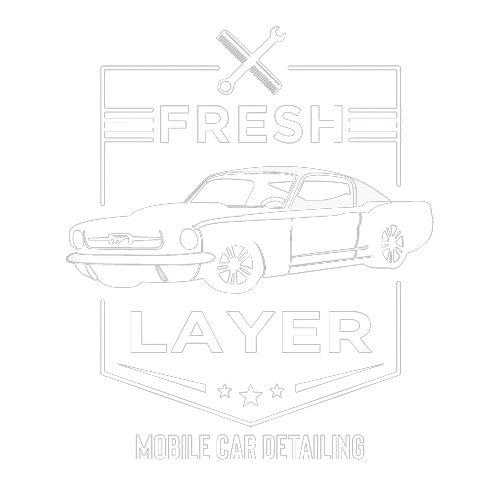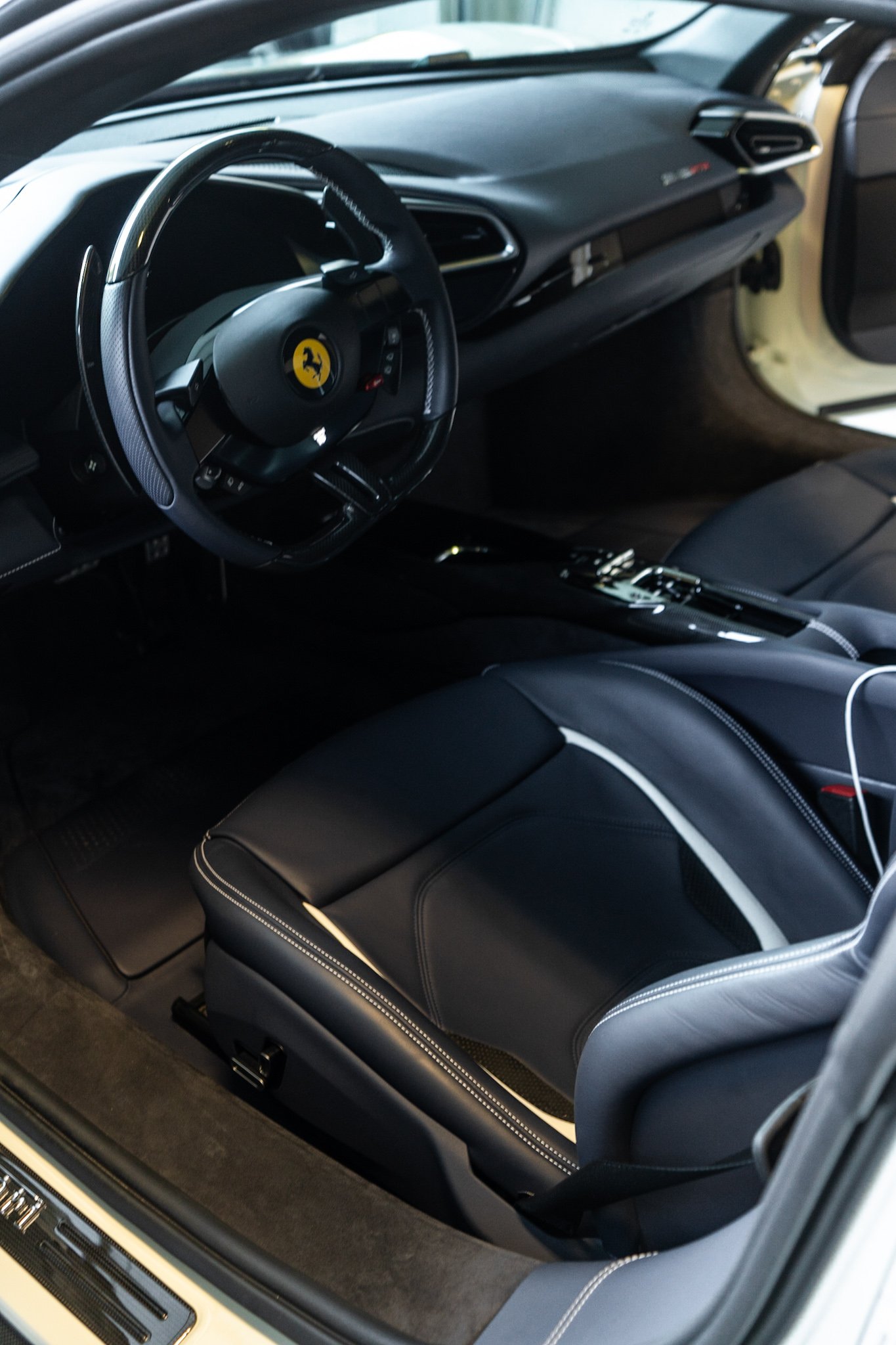How to Dry Out Your Wet Car: Professional Tips for Handling Water Damage
Introduction: The Importance of Drying Out Your Car
Water damage in a car can happen unexpectedly—whether from a heavy rainstorm, a flood or simply spilling a drink inside the vehicle. Ignoring a wet car interior can lead to mold growth, electrical issues, and even permanent damage to your upholstery.
At Fresh Layer Mobile Detailing, we understand the urgency and challenges of properly drying a wet car. This guide provides professional advice on how to dry your car quickly and effectively, covering a range of situations from water leaks to flooded interiors.
power fan for interior
Understanding the Risks of a Wet Car Interior
Before diving into the drying process, it’s essential to understand why a wet car can lead to significant problems:
Mold and Mildew Growth:
Moisture trapped inside the car creates the perfect environment for mold and mildew to grow. Beyond the unpleasant smell, mold can pose serious health risks.
Electrical Damage:
Water can seep into your car’s electrical components, leading to potential short circuits or system failures.
Material Degradation:
Prolonged exposure to moisture can deteriorate fabrics, carpets, and even leather seats, resulting in costly repairs.
Immediate Steps to Take When Your Car Gets Wet
Whether your car was caught in a flood, exposed to rain, or simply the victim of an accidental spill, the following steps should be taken as soon as possible to prevent permanent damage.
1. Turn Off the Car
If water has reached any electrical components, turning off the car and disconnecting the battery to avoid short circuits is essential. This is particularly important if the vehicle has been partially submerged.
2. Remove Excess Water
You need to remove standing water quickly to prevent further damage. Here are two efficient ways to do it:
Using a Wet/Dry Vacuum: This is the most effective tool for removing large amounts of water. Professional detailers, like Fresh Layer Mobile Detailing, use industrial-grade vacuums to extract water from carpets, seats, and even the trunk.
Manual Removal with Towels: If you don’t have a vacuum, use absorbent towels to soak up the water. Focus on the upholstery, carpets, and any visible puddles.
3. Ventilate the Interior
Once most of the water is removed, ventilating your car is crucial.
Opening Windows and Doors: Allowing fresh air to circulate will help the drying process. Park your car in a shaded but breezy area and open all the doors.
Using Fans: Placing high-powered fans inside the car can accelerate drying by increasing airflow, especially in enclosed areas like the trunk or under seats.
Tools You’ll Need to Dry Out Your Car
To properly dry out your vehicle, these tools and products are essential:
Wet/Dry Vacuum: For extracting large amounts of water from carpets and upholstery.
High-Powered Fans: Industrial-grade fans speed up drying by circulating air through the vehicle.
Dehumidifiers: These help remove moisture from the air, preventing mold growth.
Absorbent Towels and Cloths: These should be soft and highly absorbent to soak up residual water.
Portable Heaters: A portable heater can help evaporate moisture from fabrics and hard-to-reach areas in colder environments.
Professional Techniques for Drying Different Parts of the Car
Each part of your car requires a slightly different approach to ensure thorough drying and prevent damage.
1. Drying Out Carpets and Upholstery
Carpet Removal: For deep flooding, it’s often best to dry the carpets separately. This allows you to address any trapped water underneath the padding.
Steam Cleaning: A professional steam cleaner can sanitize the upholstery and help dry it after removing water.
Using Towels: Blot the area with absorbent towels for minor spills to draw out moisture.
2. Drying the Seats
Leather Seats: Blot away moisture with a soft cloth. Avoid exposing leather to heat, as this can cause cracking. Instead, use a leather conditioner afterward to restore suppleness.
Fabric Seats: A wet/dry vacuum can help extract moisture from fabric seats, followed by air drying with fans or a dehumidifier to prevent mold.
3. Drying the Dashboard and Electronics
Avoid Short Circuits: Be cautious when drying areas near the dashboard or electronic systems. Use a gentle approach, like a hair dryer on a low setting, and avoid applying direct heat for too long.
Professional Electrical Inspection: If your car has been heavily water-damaged, it’s advisable to have a professional inspect the electronics to ensure there’s no permanent damage.
4. Drying the Trunk and Hard-to-Reach Areas
Trunk Cleaning: Remove any items, including the spare tire, and dry out the compartment with towels and fans.
Flexible Hose Attachments: A vacuum combined with a flexible hose attachment can help reach tight spots that might still hold moisture.
Dehumidifying Gel Packs: These packs absorb any remaining moisture in confined areas, ensuring that even hard-to-reach spots stay dry.
Addressing Specific Scenarios
1. How to Dry Out a Car After Flooding
If your car has been flooded, act quickly:
Safety Precautions: Disconnect the battery to avoid electrical issues and remove as much water as possible using a wet/dry vacuum.
Professional Assistance: Flooded cars often require professional drying and restoration. Fresh Layer Mobile Detailing specializes in handling extreme cases of water damage.
2. How to Dry Out a Car After Rain Leaks
Rain leaks are common but can lead to severe damage over time.
Finding the Leak Source: Check your car’s sunroof, windows, and door seals for potential leak sources. Address any sealant issues promptly.
Drying Strategy: Focus on affected areas, ensuring carpets, seats, and hidden spots are thoroughly dried.
3. How to Dry Out a Car After Spilling Liquids
Spills inside your vehicle can lead to stains and odors if not cleaned properly.
Quick Cleanup: Blot up the liquid immediately using towels, then follow up with a wet/dry vacuum for deeper cleaning.
Stain Removal: To avoid permanent staining, use appropriate cleaning solutions for specific liquids (e.g., coffee and soda).
Odor Control: Professional-grade deodorizers can help eliminate lingering smells after a spill.
Preventative Measures to Protect Your Car from Future Water Damage
To avoid dealing with a soaked car, consider these preventative steps:
Regular Inspections: Check weather seals around windows, doors, and the sunroof to ensure they function correctly.
Using Protective Mats: Waterproof floor mats can help contain water spills and protect your car’s interior.
Fabric Protectants: Apply fabric protectants to your seats and carpets to help repel water and spills.
When to Seek Professional Detailing Services
If your car has been exposed to extensive water damage, seeking professional help is often the safest option:
Assessing the Damage: If you notice electrical issues, persistent odors, or visible mold, professional intervention is necessary.
What to Expect from Professional Service: At Fresh Layer Mobile Detailing, our experts will thoroughly assess, dry, and restore your vehicle to its original condition.
Why Choose Fresh Layer Mobile Detailing: We specialize in addressing water damage with precision and care, using the best tools and techniques to protect your vehicle.
Frequently Asked Questions (FAQs)
-
Depending on the extent of the water damage, it can take anywhere from a few hours to several days to completely dry out a car interior.
-
Minor water damage can often be fixed without replacement, but severe cases might require new carpets, seat padding, or electronics.
-
Driving a flooded car can be dangerous due to potential electrical issues. It’s best to have it inspected by a professional before driving again.
-
Thorough drying, dehumidifiers, and immediate action can prevent mold growth.
-
A professional deodorizing treatment can eliminate musty odors caused by trapped moisture.
Conclusion
Dealing with a wet car requires quick and careful action to prevent long-term damage. Whether your vehicle has been flooded, exposed to rain, or suffered a spill, following these professional tips will help dry it effectively and safely.
At Fresh Layer Mobile Detailing, we’re here to help with any water damage your vehicle may face. Contact us today to schedule an appointment for expert water damage restoration and detailing services.





